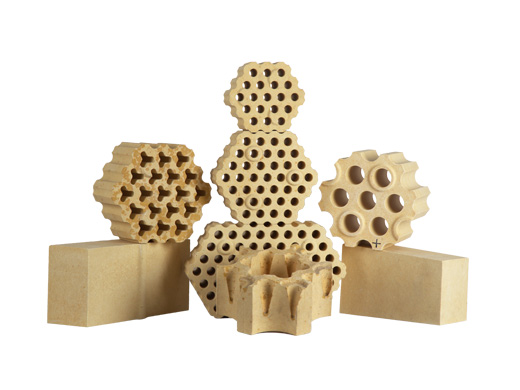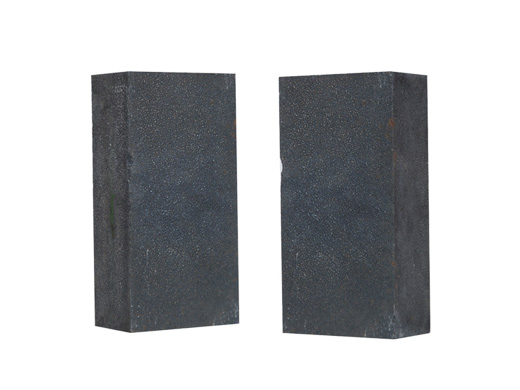Exploring Alumina Bubble Bricks: Sustainable Heat Solutions
Industry news | Refractory Wiki | Refractory news | Enterprise news |What is alumina bubble brick?
Alumina foam brick is a kind of refractory material with wide use and light weight, which has been widely used in the construction industry. It consists of high-purity alumina and closed cell bubbles, which contribute to its low density and excellent insulating properties. In this comprehensive guide, we will delve into the characteristics, production processes and uses of alumina bubble bricks.
How is bubble alumina manufacturing?
In the following paragraphs, we will delve into the manufacturing process of alumina bubbles, shedding light on how this remarkable material is produced.
Raw material selection:
The manufacture of alumina bubbles begins with carefully selected high purity raw materials. Alumina powder is derived from bauxite or aluminum hydroxide and is chosen for its excellent chemical composition and desirable properties. The quality and purity of the raw material play a crucial role in the performance of the final product.
Mixing and grinding:
In order to achieve a uniform and fine particle size distribution, the selected aluminum oxide powder is thoroughly mixed and ground. This process ensures a uniform distribution of powder particles and promotes a consistent cellular structure of the final product.
Add blowing agent:
A blowing agent is added to the aluminum oxide powder mixture to produce characteristic bubbles in the sparkling alumina. These reagents are usually in the form of organic materials or gases that produce gases when heated, causing the interior of the material to expand and form bubbles. The precise amount and type of blowing agent is carefully controlled to achieve the desired porosity and characteristics of the bubble alumina.
Set and dry:
The prepared mixture is then molded into the desired shape, such as bricks, tiles or particles, using molding or extrusion techniques. The molded product is dried to remove moisture and ensure dimensional stability. Drying temperature and duration are carefully controlled to prevent cracks or deformation.
High temperature combustion:
The dried product is fired in a kiln at high temperature. During firing, the blowing agent releases gas, causing the material to expand and form a unique bubble structure. The firing temperature and duration are carefully monitored to achieve the porosity, strength and other specific properties required for the intended application.
Finishing and quality control:
After the firing process, sparkling alumina products undergo finishing procedures such as cutting, grinding or polishing to achieve the desired size and surface quality. Strict quality control measures are implemented throughout the manufacturing process to ensure that the final product meets the required specifications and adheres to strict industry standards.
What are the properties of alumina bubble brick?
Alumina bubble brick have several key characteristics that make them an excellent choice for many construction applications. These characteristics allow alumina foam bricks to provide reliability and efficiency in different building environments. Their diverse applications further highlight their value in creating sustainable and energy-efficient structures.
Lightweight and Durable:
Alumina bubble bricks are lightweight, which makes them easy to handle during construction. Their low density not only reduces the structural load but also contributes to cost-effective transportation. Despite their lightweight nature, these bricks are highly durable and can withstand the rigors of different construction environments.
Excellent Thermal Insulation:
One of the most notable properties of alumina bubble bricks is their exceptional thermal insulation. The closed-cell bubbles within the bricks effectively minimize heat transfer, ensuring energy efficiency and tcontrol within buildings. This property leads to reduced heating and cooling costs and creates a comfortable living or working environment.
Impressive Heat Resistance:
Alumina bubble bricks exhibit remarkable heat resistance, making them suitable for applications in furnaces, kilns, and other high-temperature environments. They can withstand extreme heat without deformation or loss of structural integrity, ensuring optimal performance and longevity in such demanding conditions.
Chemical Corrosion Resistance:
Another significant property of alumina bubble bricks is their resistance to chemical corrosion. These bricks can withstand exposure to various acids, alkalis, and chemical agents, making them suitable for use in harsh chemical environments. They provide long-lasting protection and maintain their structural integrity even in corrosive conditions.
Versatile Applications:
Alumina bubble bricks have a wide range of applications in the construction industry. They are commonly used in industrial furnaces, kilns, petrochemical plants, power generation facilities, and metal processing units. Additionally, they are utilized in the construction of chimneys, flues, and as refractory insulation materials. Their versatility allows for efficient energy management and optimal performance in various construction projects.
What are the uses of bubble alumina?
Bubble alumina, with its unique properties and characteristics, finds wide-ranging applications across various industries.
Refractory Insulation:
One of the primary applications of bubble alumina is in refractory insulation. Its lightweight nature and exceptional thermal insulation properties make it an ideal choice for lining furnaces, kilns, and other high-temperature environments. Bubble alumina effectively retains heat within these structures, ensuring energy efficiency and reducing heat loss.
Foundry Industry:
Bubble alumina plays a vital role in the foundry industry. It is utilized as a refractory material in the production of cores and molds for metal casting. Its high heat resistance, coupled with excellent dimensional stability, allows it to withstand the extreme temperatures and rapid temperature changes encountered during the casting process.
Ceramic Components:
Bubble alumina is also extensively used in the manufacturing of advanced ceramic components. Its low density and thermal shock resistance make it suitable for applications such as kiln furniture, ceramic crucibles, and thermocouple protection tubes. Bubble alumina's ability to withstand high temperatures ensures the longevity and performance of these ceramic components.
Insulating Fire Bricks:
Another important application of bubble alumina is in the production of insulating fire bricks. These bricks are widely used in the construction of furnaces, ovens, and fireplaces. The porous structure of bubble alumina provides excellent insulation, preventing heat transfer and reducing energy consumption in these heating appliances.
Catalyst Support:
Bubble alumina serves as a catalyst support material in various chemical processes. Its high surface area and thermal stability make it a suitable choice for supporting catalysts in reactions such as hydrogenation, oxidation, and polymerization. Bubble alumina offers enhanced catalyst dispersion and improves the efficiency of these chemical reactions.
Filter Media:
In certain industries, bubble alumina is utilized as a filter media for the filtration of molten metals and corrosive liquids. Its porous structure allows for efficient filtration, removing impurities and ensuring the purity and quality of the final product. Bubble alumina filters find applications in industries such as metal casting, chemical processing, and wastewater treatment.
Conclusion
Alumina bubble brick, through meticulous process manufacturing, excellent performance, so that it is widely used in many industries. Their lightweight, excellent thermal insulation, thermal shock and corrosion resistance make them versatile components in a variety of applications, including insulating linings, casting operations, catalyst support and filtration. The properties of alumina bubble bricks make them indispensable materials in industrial processes.
Newest
- 2023-07-31
Properties of silicon nitride and its application in refract···...
- 2023-07-31
Properties of silicon nitride and its application in refract···...
- 2023-07-31
Properties of silicon nitride and its application in refract···...
- 2023-07-31
Properties of silicon nitride and its application in refract···...
- 2023-07-31
To explore the application of magnesia carbon brick in refra···...
Solution
- 2022-11-22
The technical requirements and production processes of fused···...
- 2022-09-06
Price Determinants of high alumina fire bricks...
- 2022-08-30
Technical performance and technology of silica mullite brick···...
- 2022-08-27
Refractory materials in various parts of the furnace and pre···...
- 2022-08-23
Magnesite chrome brick composition process classification...




